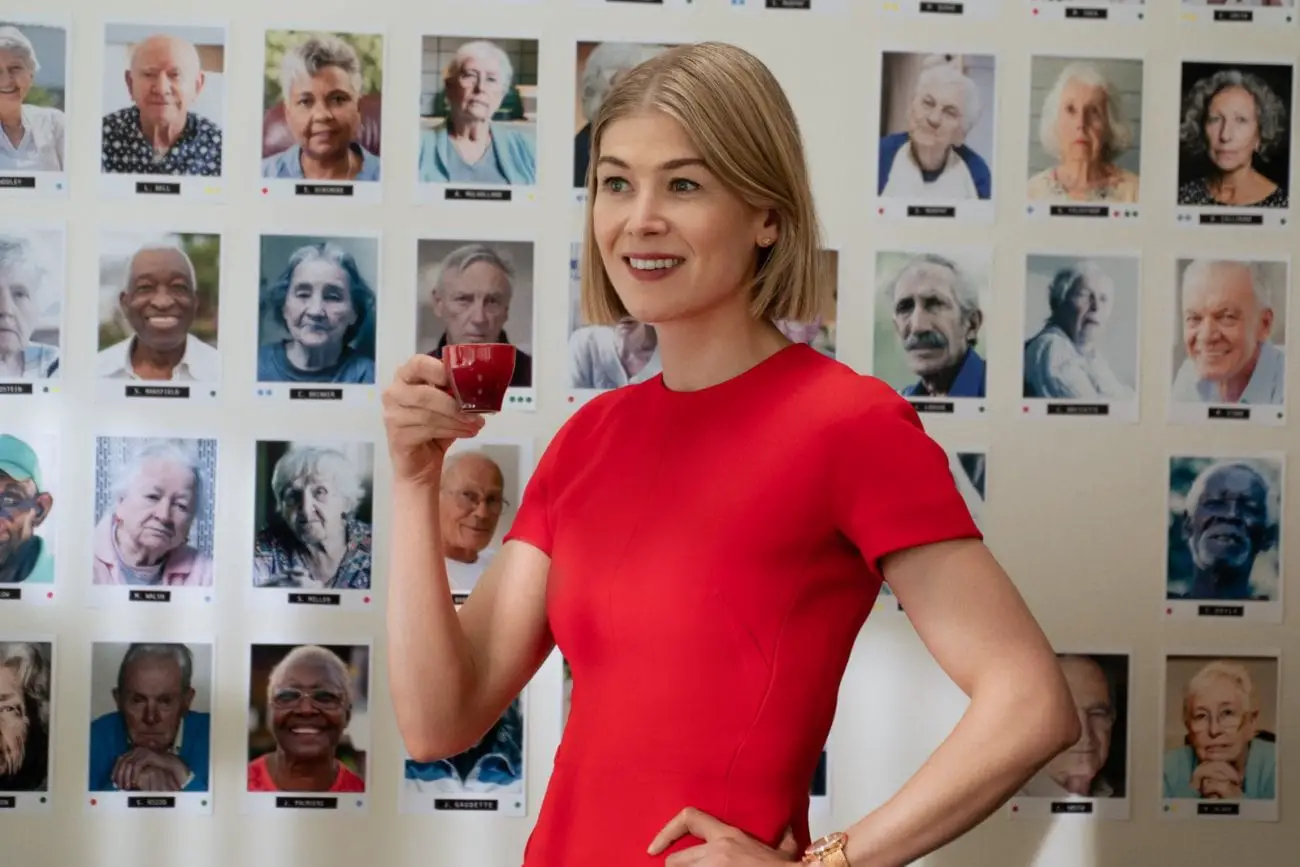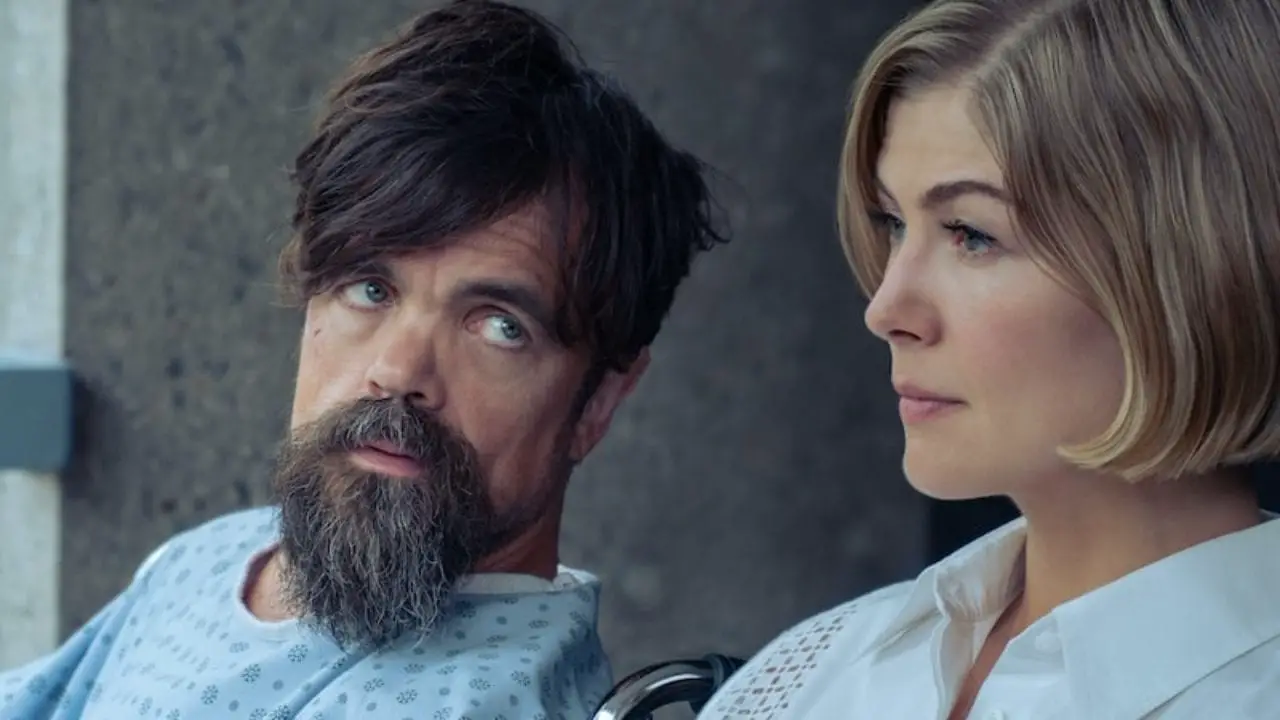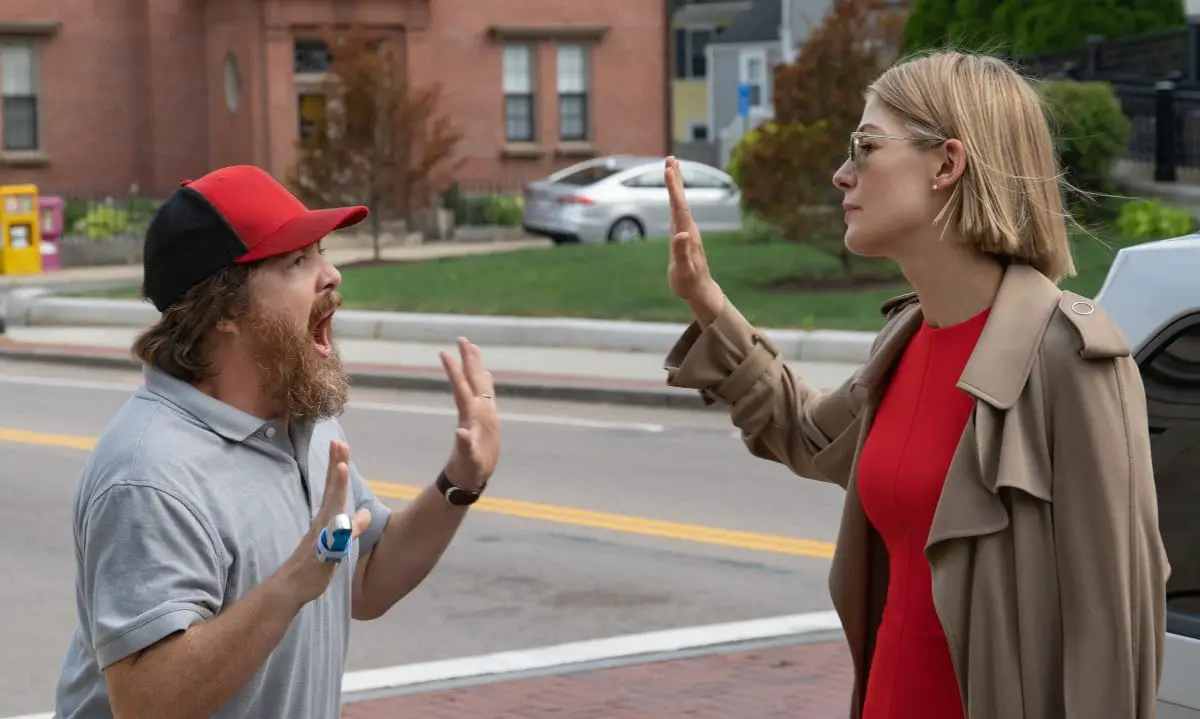Gaining traction around the turn of the century, the emergence of hardened female archetypes began to permeate mainstream cinema. From the bloody restitutions of Kill Bill to 2020’s rousingly vindictive Promising Young Woman, from the gruesome quest for justice in The Nightingale to the sordid reprisals of The Girl with the Dragon Tattoo, from vicious redresses in 2017’s Revenge to the demonic carnage of Jennifer’s Body, willful women have now become staples of contemporary revenge cinema. Fed up with being objectified and defiled by men, a band of vehement vixens have unabashedly risen to even things up: eager to exact a long overdue retribution upon the horrid patriarchy.
This new archetype is a refreshing pivot away from the antiquated damsel in distress and femme fatale archetypes. Shedding the passivity of the troubled pretty little thing, shedding the high-heels and red lipstick, and shedding the Studio-era stereotypes of Hollywood starlets stuck playing gold-diggers and vamps, the sovereign heroines of contemporary cinema take matters into their own hands in a manner that would make Lady Macbeth envious. On almost every tier, the heroines kicking serious celluloid-butt today are more autonomous than their onscreen predecessors. No longer reliant upon seductive charms and cunning traps, they assail enemies with swords, sniper rifles, and supernatural powers. And for the most part, they almost all seem to share one recurring trait: the need to vindicate some awful atrocity inflicted by men upon women, society, and/or the earth.
We see this new brand of feminine power materializing in an array of genres. We see it in female superheroes (Black Widow, Captain Marvel, Harley Quinn), who are increasingly celebrated as symbols of self-sufficiency and strength instead of being reduced to sex-bots with long legs and sultry capes. We see it in strong businesswomen archetypes, who rule in boardrooms (Joy, The Intern, The Devil Wears Prada) and courtrooms (Miss Sloane, Legally Blonde, Love Guaranteed), and who have to navigate the tricky trade-offs that come with professional commitments and staunch moral stances. We even see it in tales of CIA operatives and soldiers (Megan Leavey, Zero Dark Thirty, G.I. Jane).
But there is one archetype we rarely see: the downright iniquitous female lead; the lead that is not merely a fantastical witch or a crone, but who is utterly self-serving, materialistic, and heartless; a lead that unapologetically possesses a laundry list of villainous associations, and does so without any redeeming qualities. This is perhaps why Rosamund Pike’s Marla Grayson—the predatory scam artist at the center of Netflix’s viral 2021-release I Care a Lot—struck such a nerve with the zeitgeist. For even in today’s pantheon of pugnacious female leads, few if any heroines have been depicted quite as unambiguously irredeemable as Marla is in J Blakeson’s firebrand film.

A serial sociopath, Marla is shown in the very first scenes of the film persuading a gullible judge to grant her unjustified legal guardianship over a hapless elder. The endgame of the ploy is simple: once under her legal custody, Marla will remorselessly pilfer the assets of the helpless retiree. We quickly learn she’s made a racket out of this for some time now, and that she shows zero compunction or sign of slowing down.
Prudent, icy, and callous without a morsel of mercy, Marla is clearly not some idealized form of benevolent female power. An imitative incarnation of male violence and greed, she emanates the very avariciousness that defines toxic masculinity. She is as spiritually bankrupt and immoral as the most rotten scumbag imaginable: a mimesis of the patriarchy itself. Brazen, and unapologetically so, Marla turns into a totemic symbol of vile femininity: adopting the very testosterone-cum-capitalism mindset that has long served as both the stimulus and the bane of western civilization.
In exaggerating Marla’s headstrong and quasi-primal personality, I Care a Lot’s might be seen as a satire of the shameless grift churning the gears of modern entrepreneurialism. From Marla’s opening voice-over monologue, J Blakeson overtly emphasizes her ultra-competitive worldview: “There’s two types of people in this world,” Marla says, “The people who take… and those getting took. Predators and prey. Lions and lambs. […] I am a f*cking lioness.” Yet, as Marla sermonizes this homily of Machiavellian hardheartedness, we see her gallantly strutting into the courtroom in a blood red dress. The color is revealing: she is as predatory as a shark. Nevertheless, by simultaneously presenting Marla as a confident, savvy, vaping lesbian, I Care a Lot certainly seems gung-ho to romanticize her moxie. This leaves viewers to wonder whether or not Marla is an indictment of entrepreneurialism or a glamorization of it. She does, after all, tick off numerous signifiers of a well-calibrated, contemporary anti-hero. Right away, the film’s ulterior motives seem ambivalent: are the visual cues seducing us to sympathize with Marla’s psychopathic tendencies, or simply trying to entertain us with their sardonic impartiality?

Flaunting the nasty, nihilistic tone of a pitch black comedy, the flashy aesthetics of I Care a Lot also seem to reveal from the get-go that the film is saturated in artifice. Cocksure to an almost cartoonish degree, Marla is a hyperbolic emblem of cool. Striding into courtrooms and corporate offices, she exhibits a sassy swagger and a cutthroat demeanor that definitely craves to be fawned over. Tailored to vogue aspects of the times, she possesses a fashionable array of identity cues and semiotics that befuddles an easy read. Sure, the wicked contours of her sociopathic soul are visibly transparent; but she also oozes with so much pizazz we cannot help but to feel beguiled by her self-possession and panache.
Before extrapolating further on whether or not Marla is celebrated by the film though, I want to key in on the aforementioned quote—on Marla’s opening voice-over that reduced the complex scope of human nature to a simplified dichotomy of “lions and lambs.” Without a doubt, the obdurately declarative tone of her statement is meant to be inflammatory, even divisive. The sweeping generalization is also, intentionally or not, ridiculously unsubtle. By splitting all of humanity, and its multifaceted nature, into a simple binary, Marla is right away tainted by lethally hubristic and juvenile overtones. As emphatic and plucky as such bloviating may sound to more impressionable minds, this type of axiomatic pontificating almost always amounts to little more than flimflam.
For some time, this bumptious sort of macho movie-talk dominated the Cineplex. Spearheaded by Guy Ritchie’s loquacious leads, and Tarantino’s smug and garrulous conmen, this sort of puffed-up dialogue became a mainstay of gritty, violent indie flicks in the ’90s and early ’00s. At some point though, it faded out of fashion. And for over a decade, such vainglorious smack-talk has been deemed dated. Scoffed at by critics as derivative and passé, it has survived only in the unseemly recesses of hyper-masculine, small-budget films (Jackie Earle Haley’s Criminal Activities, Paul Schrader’s Dog Eat Dog, Joe Carnahan’s Smokin’ Aces). But with The White Tiger (a takedown of India’s caste system that wields a similarly turgid rhetorical style) and now I Care a Lot kicking off Netflix’s 2021 slate of rabble-rousing satires, this once dormant strand of pretentious grandstanding appears to be in the inchoate stages of making a full-blown comeback.
The reason I bring this up is simple. Without the novel gender politics presented on its surface, I Care a Lot would feel stale and eerily familiar: like nothing more than the redecorated resurgence of a tired subgenre. Perhaps this is why Marla’s purported image of herself (as “a f*cking lioness”) so conveniently coincides with Blakeson’s primary thematic designs. And in this new light, the questions regarding Marla’s character now become a bit more isolated and clearer. Is Marla a symbol of a new archetype of savage femininity (coexisting alongside a smattering of other examples, including Malkina (Cameron Diaz) in Ridley Scott’s The Counselor, and Elena (Salma Hayek) in Oliver Stone’s Savages)? Or is the characterization of Marla and her overwrought preaching merely implanted from above—just the same old late ’90s screenplay machismo dolled-up in the guise of a fresh face?

This is a tough call to make, and one that begs the question in many ways: requiring the skeptic to consider the way their own gender assumptions color their inferences. For one, Pike’s portrayal of Marla is pretty darn convincing. She definitely does her damn best to sell the screenplay’s baseless assertions and soapbox soliloquies. And in a more generous viewing, her overbearing monologues—bumptious and incendiary as they may be—retain a semblance of narrative credibility.
In a less charitable viewing, however, Pike’s delivery remains commendable, but something still feels stilted and crude—archaically overstated. And sadly, throughout the film, I honestly found myself quite often in the latter camp. Though impressed by Pike’s charisma, which felt like a natural extension of her work in the superior Gone Girl, I could not help but to feel like the vapid dichotomizations crammed into the script sounded forced. The sentiments she echoed felt as if they more aptly belonged on dude-dominated forum on 4Chan, in a sensationalistic Chuck Palahniuk novel (Fight Club, let’s say), or in some pulpy machismo-laden indie flick of the late ’90s. Pike valiantly animated the words on the page to the best of her ability, but the words, like the film itself, still felt glaringly engineered.
Excessively formulaic and fabricated, I Care a Lot’s hyper-masculine philosophizing came across as both abrasive and obnoxious. It wasn’t just bothersome that Marla bombastic nature refused to wane throughout the entire film. What was truly bothersome was that instead of imbuing Marla with nuance and complexity, Blakeson chose to amplify her bravado to a theatrical degree. By having Marla ham it up, she is flattened to a two-dimensional lioness: every bit as cutthroat, nasty, and unreflective as the Russian mobsters she ultimately finds herself entangled with and pitted against. Without a modicum of moral or philosophical finesse, she boasts in a manner that screams of contrivance and plasticity. From her Nietzschean disdain for the feeble (“Most of us are weak, compliant, scared”), to her distaste for the indigent (“I’ve been poor. It doesn’t agree with me.”), the overblown dimensions of her character become so garish they verge on camp.
Later in the film, Marla even goes so far as to impudently profess that she has zero fear of dying: mimicking a level of braggadocio befit for your average sociopath (Patrick Bateman, to namedrop a single cinematic icon) or doltish muscle-man. Seconds later, however, she is whining about how she must get rich. Both divulgences just don’t vibe. To be perfectly blunt, Marla is much too smart to have a worldview as generic as the proverbial hip-hop slogan get rich or die tryin’. Her unscrupulous behavior, her economic craftiness, and her unrepentant duplicity are much too dynamic for such boring ideations. Perhaps, one might suggest that the film is merely going after a demographic that skews younger and thus less sophisticated. In terms of tapping into an adolescent kind of angst, Marla’s blunt philosophizing presumably works. One could easily imagine teenagers idolizing her as an icon of subversion.
At the same time, Marla is never wholeheartedly celebrated. In fact, she is consistently vilified within the film itself. In one verbal showdown, Marla’s latest victim Jennifer Peterson (played by the always brilliant Dianne Weist) calls her a “crock of c*nt.” Playfully alliterative and absolutely bawdy, this profane disparagement of Marla is thematically fitting, even if it is also egregiously tacky. In another scene, Jennifer Peterson’s lawyer Dean Ericson (played by a snappy Chris Messina) informs a judge that his aims are to undo Marla’s “miscarriage of justice.” Dean goes on to describe how “Miss Grayson” colluded with “Dr. Amos” to “embellish symptoms” and “game the system” in a “scandalous” manner. These two examples patently show Marla being not only exposed and debunked, but being debunked with loaded, gendered terminology: I Care a Lot obviously has femininity on its mind.

Yet, even despite the clear-cut depiction of Marla’s disagreeable demeanor, for most of the film I remained steadily attuned to the game I Care a Lot was trying to play. I even began to reluctantly forgive its facile straddling of political and ideological lines in pursuit of cultural cred. It is hard to frown at the mischievous energy of a pitch-black comedy. Cruel, wicked, devious characters are endlessly entertaining. Cruel, wicked, devious female characters can be even more so. Cruel Intentions, Heathers, and Thoroughbreds are all bona fide classics: evil dispositions are just supremely entertaining. Why else would cinema perennially gravitate toward stories about serial killers, psychopaths, and maniacs? Suffice to say, the depiction of an unlikeable character in itself didn’t bother me in the least. It was how Marla was depicted that got under my skin. Marla was not played for laughs; nor was she played for cogent satire, either; she was played for something much more hackneyed and yet thematically unrealized—and thus, she has become a character I’m still trying to fully grasp.
What perhaps bothered me most about I Care a Lot is that it very much felt like it was only pretending to say something resonant and meaningful about female power. Without equivocation, Blakeson portrays Marla as a ruthless swindler. Marla is neither unilaterally lionized nor vilified though. More than anything, she feels exploited for the film’s shifting agenda. To attract worshippers, she is shown as extremely well manicured, hip, chic—not to mention quick-witted, articulate, smartly dressed, and in a sexy Sapphic romance with her partner-in-crime Fran, potently played by Eiza González.
The conflation of these positive attributes with her inherent wickedness is not problematic in itself—ruthless swindlers are a fascinating archetype, and hip, chic, intelligent women have every right to play such archetypes. What is problematic, for me, is that I found the film’s use of Marla to be manipulative. It felt as if the marginalized dynamics of Marla’s intersectional identity were deployed for commercial gains—that her trendy social status as a token lesbian and assertive woman were put in to masquerade what was otherwise a mediocre story with insipid themes and underdeveloped moral inquiries.
This is where the rushed denouement and muddled messaging of I Care a Lot becomes central. Up until its flawed final scene, I Care a Lot enthusiastically celebrates Marla’s dialed-up #GirlBoss identity. She resiliently manages to outsmart the Russian Mob—helmed by Roman Lunyov (played by the always engrossing Peter Dinklage)—and after beating Roman and then teaming up with him, a montage sequence shows her speaking about her successful business career on a press circuit. Then, out of nowhere, she meets a brusque and tragic end. She is abruptly shot in the chest by Feldstrom (Macon Blair)—the scraggly, bearded, aggravated son of one of Marla’s elderly victims. At once, everything is upended.

To understand all the ramifications of this ending though we must back up. In the film’s opening act, we had already witnessed a charged altercation between the two. After Marla handily outwits Feldstrom before the judge, he confronts her in the parking lot and spits in her face, invectively wishing a murderous end to befall upon her head. This confrontation is critical to understanding the allegiances of I Care a Lot (if it has any at all), and serves distinctly different purposes at the bookends of the film.
As it first plays, the interaction is rife with sexist friction. Feldstrom is shown completely losing his cool. Instantaneously, his disgusting gesture (spitting) inverts our moral barometer. The visceral repugnance we feel toward his projectile sputum is so strong it mitigates Marla’s heinous chicanery. This is in itself a sneaky and spurious maneuver in the script. Sure, Feldstrom’s expectorate is revolting. But as bad as it is, it shouldn’t overshadow the exponentially worse ramifications of Marla’s actions. Marla can simply wipe off her face; Feldstrom’s mother, on the other hand, is royally screwed. Nevertheless, because the scene is keenly shot from Marla’s perspective, it a sneakily persuades the audience to sympathize with her side. When Feldstrom reaps revenge at the end though, the significance of this first skirmish alters substantially and we realize it was an act of narrative misdirection.
Feldstrom’s surprising, last-second return to the film changes everything. Manic and flustered, he reveals that his mother died in assisted living, pulls out a gun, and shoots Marla. We presume she dies, on the spot. And in the aftermath, as the credits roll, we are left once again bewildered. Just as we are comfortable reading the film as an extolment of Marla’s wheeling-and-dealing hustle, it flips the script. Are we to suddenly sympathize with Feldstrom and his loss? Are we to mourn Marla’s demise? Are we to feel unanimous disdain toward all? Are we to simply feel fatigued? Ambivalent? Suddenly, every reading becomes flimsy, lopsided, and contradictory.

Before Feldstrom achieves comeuppance by killing Marla, I Care a Lot appears to be offering a fairly clear-cut thesis. Just before Feldstrom reappears, the hagiographical montage sequence of Marla’s press-circuit misleads us to believe she will crest I Care a Lot on top of “the game”: rich, powerful, and at the helm of a self-made empire. As iniquitous as Marla had been, the audience is being primed to begrudgingly adulate her go-getter attitude and unstoppable staunchness. And if Marla indeed went out on top, her character would have predominantly retained this air of respectability: with her redemption effectively turning the film into a satire of society’s unfair stereotypes toward assertive women. It is, after all, well known that whereas men are praised for ambition and initiative, women with similar attributes are critiqued as being brash, bossy shrews. This double standard has been rampantly deconstructed in recent years. Therefore, despite Marla’s distasteful attributes and cheeky offenses, her prosperity would have been naturally construed as a celebration of feisty femininity.
However, this take is abruptly upended with Marla’s sudden demise. Stunned and flummoxed during the credits, we are instead left wondering why Blakeson chose to undermine Marla’s gutsy victory. Did I Care a Lot kill Marla as a sort of chauvinistic taunting—as if to claim that women can never truly triumph? Did the film kill Marla in an act of sympathetic irony: acknowledging the fact that even after women leap over the same hurdles as men, they are inevitably punished for the same acts that men, like Dinklage’s Roman Lunyov, remain impervious to? Did it want to point out that Marla’s stony-hearted aggression deserved extirpation? And if this is the case, did it unfairly capitalize on Marla’s dark charms for its own escapist needs, only to treacherously abandon her at the end to avoid endorsing a form of ruthless female power? Or is I Care a Lot simply an agnostic fluff piece: signaling itself as woke despite being truly devoid of any legible social value or ethical import?
Whatever the intentions were, I Care a Lot’s disruptive finale definitely smirks at the audience with sardonic glee. One can almost feel the gloating cynicism lurking behind its deflective stance. Sure, we may have roiled with disquietude as Marla’s smarmy smile radiated onscreen seconds before she is literally and symbolically liquidated; but the mordant decision to kill her off did not seem to be narratively warranted either. And this dilemma leads us to one final consideration: was I Care a Lot actually attempting to sabotage our hankering for moral clarity? In other words, was Marla’s death included with the aim of destabilizing our moral expectations altogether? And if so, is it possible that I Care a Lot’s potency resides in its refusal to console our ideological leanings?
For all of these reasons, it is hard to parse or put a finger on exactly what I Care a Lot is trying to say. Whatever conclusion one comes to, it is hard to refute that the violence shoehorned in at the end thwarts any hope for moral certitude. Instead, we are left with a mess of paradoxical quandaries too twined to entangle.
Usually, I find such equivocality to be enlightening. But strangely enough, I finished I Care a Lot with a lingering uneasiness about how noncommittal it was. It felt rudely anti-feminist, despite engrossing our collective attention with the allure of female power. It felt as if it used Marla’s gender and identity as a product: as something to profit off of.

And this led me to an epiphany: is it possible that the cagey and evasive nature of I Care a Lot was more mischievous than aesthetic or philosophical in nature? As the fictive creation of a man, I Care a Lot, after all, could easily be construed as a work of gender appropriation. In this scenario, one must merely entertain a fairly plausible syllogism:
- Strong female leads are increasingly marketable archetypes in cinema.
- Men holding top-level industry positions care first and foremost about marketability.
- Thus, feminist archetypes are increasingly marketed strictly for economic ends.
This argument is not to say that men cannot create art with female leads or feminist proclivities. As far as I’m concerned, people can create whatever they are inspired to make—regardless of the metrics of identity. The protean nature of identity and the power of empathy alone make any artistic exploration fair game.
What I am trying to highlight here is that there is a large subsection of powerful individuals who are and will continue to be interested in pilfering dominant ideological trends for mercenary gains. This sector is not earnestly motivated by artistic empathy or ideological passions. It is motivated by money. And what it wants to do most of all is to amuse and distract. It is thus happy to distort its stance with postmodern strategies—totally content pandering to popular proclivities without explicitly elevating them. In essence, it adorns mass-entertainment in empty woke-ness like a wolf in sheep’s clothing.
As expected, the public response to I Care a Lot has appeared quite befuddled. The only consensus that is mostly agreed upon is that it is a cynical, caustic film. What I can say is that the incongruities between I Care a Lot’s clunky subject matter and its fuzzy message is not representative of cinematic products currently being produced by independent female filmmakers. On that front, a genuine renaissance in fully realized femininity is vibrantly alive. Just look at Chloe Zhao’s deeply sublime tenderness for the rugged, naturalistic outcasts of the American West; or Kelly Reichardt’s plaintive portraits of Northwestern friendships and the maternal wild, each paced with melancholic patience; or Miranda July’s searing humanism, actualized through incidents of transcendent awkwardness; or Josephine Decker’s explorations of the complex female artists who teeter between genius and madness; or Claire Denis’s raw and fleshly preoccupations with tactility—her visual language teeming with sensuality.
With these films, we are possessed by the undiluted ethos and puissance of a visceral femininity: the kind that exists not in the abstract concepts, gaudy axioms, and lurid didacticism (i.e. I Care a Lot) so much as in distinct modalities, focal points, and sensibilities. This kind of feminine filmmaking—intuitive, percipient, compassionate—impacts the way people interact with the world, because it is firmly entrenched and rooted in the organic substance of the world. It instills us with an augmented sense of delicacy, vulnerability, and humanity: even within narratives that are themselves often mired in hostility, violence, death, sin, and evil.

Gentleness, sensitivity, tenderness, receptivity—these qualities are just a few amongst many that were once the foundations of ‘femininity.’ Nevertheless, these qualities reverberate today like dated stereotypes: with soft, syrupy connotations that reinforce rigid gender labels and presuppositions. Such skepticism is valid: the degree to which gender and personality traits are innately intertwined (both on biological and semiotic levels) is still largely unknown, and needs further scientific examination. To make any blanket statement on this debate would be to over-generalize and pigeonhole both sides of a binary that is much too fluid to put into determinate categories.
Therefore, the instinct to subvert traditional gender stereotypes is completely understandable. And depraved, ultra-‘masculine’ female characters like Marla Grayson should feel like welcoming harbingers of a more mercurial and androgynous archetypal pantheon to come. Increasingly complex and amorphous characters are an exciting step toward greater diversity and complexity in storytelling. That said, such characters should still be greeted with strict critical inspection. Simply embodying progressiveness does not necessarily make a character authentic or real. Ideally, characters should be more than ciphers manufactured for the sake of seducing eyeballs and raking in money. Ideally, they should feel like the byproducts of sincere solicitude and care. And in my honest opinion, I Care a Lot’s Marla Grayson fails to pass this new iteration of the Bechdel test.



